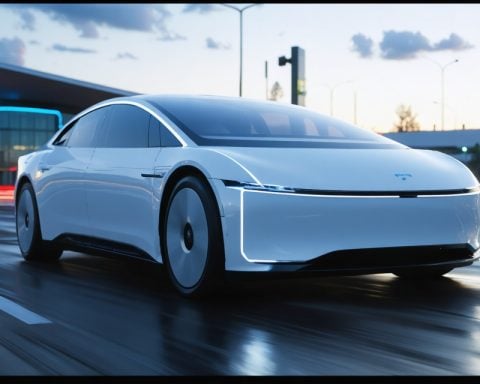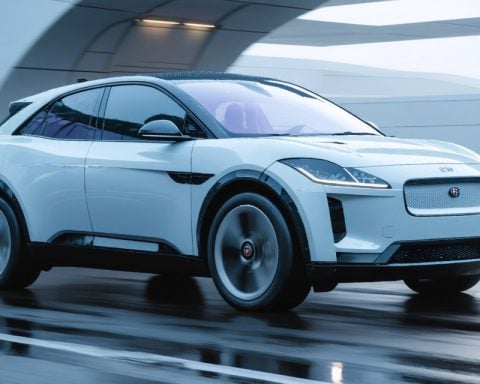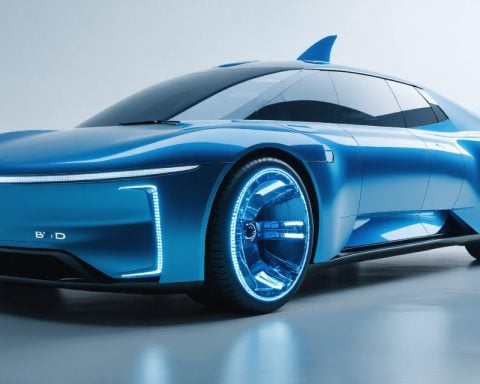Electric Vehicle Market Faces Challenges in Europe
Despite a stable automotive market, sales of electric vehicles (EVs) in Europe saw a surprising decline last year. The European Automobile Manufacturers Association (ACEA) reported that approximately 1.99 million battery electric cars were sold, marking a decrease of 1.3 percent compared to 2023. This downturn raises concerns about the ongoing shift from traditional petrol and diesel vehicles to electric alternatives.
While overall car sales in Europe, which includes countries like the UK, Norway, and Switzerland, experienced a modest rise of 0.9 percent—approaching 13 million units—battery electric cars struggled to maintain their previous momentum. Despite being the third most popular vehicle type in 2024, the market share for fully electric models fell from 14.6 percent to 13.6 percent.
Germany, a significant market for EVs, witnessed a notable plunge in sales, dropping by 27.4 percent after government subsidies were withdrawn at the end of 2023. Conversely, Britain’s EV sales soared by 21.4 percent, positioning it as the leading market in Europe with just under 382,000 units sold last year. In contrast, Norway maintained its lead, with nearly 90 percent of all new vehicles being electric. The mixed results across Europe highlight a complex transition towards sustainable transportation amidst shifting consumer preferences and regulatory changes.
Shifting Dynamics in the Electric Vehicle Landscape
The decline in electric vehicle (EV) sales in Europe signals a broader cultural and economic recalibration as societies grapple with the transition to sustainable transportation. With approximately 1.99 million EVs sold last year, the drop raises pivotal questions about consumer acceptance and the effectiveness of government policies aimed at fostering green technology. In Germany, the significant slump after the withdrawal of subsidies indicates that political will and fiscal incentives are critical in driving consumer behavior; without them, the momentum towards electrification may falter.
Moreover, the contrasting trends between countries like Britain and Germany underscore the regional disparities within the European market. Britain’s robust growth in EV sales, coupled with Norway’s near-complete adoption, illustrates how localized efforts—including infrastructure development and consumer education—can effectively stimulate demand. This divergence hints at a future where EV adoption may not be uniform but rather influenced by tailored strategies and societal attitudes towards sustainability.
From an environmental perspective, the challenge remains: EVs are typically viewed as a crucial element in combating climate change. However, fluctuating sales raise concerns about the long-term impact on emissions reduction goals. If Europe cannot sustain current EV adoption rates, the forecasted decline in greenhouse gas emissions may stall, further complicating commitments to the Paris Agreement.
Ultimately, the trends we observe now will be critical in shaping industry innovations and global economic standing as nations compete for leadership in green technology. An ongoing conversation about consumer needs, regulatory frameworks, and environmental responsibilities will be essential to ensure that the shift to electric mobility remains resilient and sustained over time.
The Future of Electric Vehicles in Europe: Challenges and Opportunities
Electric Vehicle Market Faces Challenges in Europe
The landscape of the electric vehicle (EV) market in Europe is undergoing significant changes, revealing both challenges and opportunities that could shape its future. Recent data from the European Automobile Manufacturers Association (ACEA) indicates that while the overall automotive market demonstrated modest growth, the sales of battery electric cars experienced a decline, raising eyebrows among stakeholders in the industry.
Current Market Trends
In 2024, approximately 1.99 million battery electric cars were sold across Europe, reflecting a decrease of 1.3 percent compared to the previous year. This shift comes despite an overall increase in car sales of 0.9 percent, totaling nearly 13 million units. The market share of EVs also fell from 14.6 percent to 13.6 percent, emphasizing the struggle to maintain the momentum gained in prior years.
Key Market Players
1. Germany: As one of the main players in the European EV market, Germany saw a drastic decline in EV sales, dropping by 27.4 percent. The conclusion of government subsidies in late 2023 is considered a primary factor influencing this downturn.
2. United Kingdom: In contrast, the UK recorded impressive growth in EV sales, with a remarkable increase of 21.4 percent, making it the leading market in Europe with nearly 382,000 electric vehicles sold.
3. Norway: Continuously leading in the adoption of electric vehicles, Norway reported that nearly 90 percent of all new vehicle sales were electric, showcasing a unique commitment to sustainable transportation.
Pros and Cons of Electric Vehicles
Pros:
– Sustainability: EVs contribute to reducing carbon emissions and mitigating climate change.
– Lower Operating Costs: Electric vehicles typically have lower fuel and maintenance costs compared to traditional combustion engine vehicles.
– Government Incentives: Many countries offer incentives and tax breaks for purchasing EVs.
Cons:
– Range Anxiety: Many consumers still worry about the distance an electric vehicle can travel on a single charge compared to petrol or diesel counterparts.
– Charging Infrastructure: The availability of charging stations remains a barrier in various regions, especially in rural areas.
– Initial Cost: The upfront cost of electric vehicles can still be higher than that of traditional vehicles despite decreasing battery prices.
Future Predictions and Innovations
The EV landscape is expected to evolve significantly over the next decade. Innovations such as solid-state batteries and increased charging speed are projected to improve both the performance and convenience of electric vehicles. Additionally, increased investment in charging infrastructure is critical to addressing range anxiety and ensuring that EVs become a viable option for all consumers.
Environmental and Security Aspects
Sustainability remains at the forefront of the EV conversation. The manufacturing and disposal processes of batteries, as well as the sourcing of materials like lithium and cobalt, pose environmental challenges that need to be addressed. Furthermore, as vehicles become increasingly connected and autonomous, security risks related to hacking and data protection must be carefully managed.
Market Insights and Analysis
– Pricing Trends: While the cost of electric vehicles has been decreasing, fluctuations in materials pricing may impact future affordability.
– Customer Preferences: Collecting insights into consumer preferences can help manufacturers develop vehicles that better meet the needs of potential buyers.
In conclusion, while the European electric vehicle market faces notable challenges, particularly highlighted by the fluctuation in sales figures, the potential for growth and innovation is substantial. With increased attention to infrastructure development and environmental impacts, the path forward can lead to a more sustainable automotive future.
For more information on electric vehicles and market trends, visit ACEA.

















